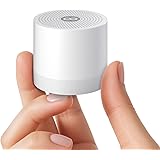Optimal Sleeping Positions for Lower Back Pain Relief: A Modern Approach
Finding comfort and achieving restful sleep can feel like an impossible task when you are experiencing persistent lower back pain. Many individuals struggle nightly, searching for the perfect position to ease their discomfort and promote healing. This article, complementing the insightful video above, delves deeper into specific **sleeping positions for lower back pain**, offering practical strategies and a more comprehensive understanding of spinal mechanics.Historically, advice often leaned towards sleeping on very firm surfaces, a solution for what were termed ‘flexion-related problems’ prevalent in earlier decades. However, our understanding of spinal health has significantly evolved since the 1960s and 70s. Today, healthcare professionals recognize that many people exhibit ‘extension sensitivity,’ where leaning back or extending the spine causes discomfort.
For example, a recent study by the National Institutes of Health indicated that roughly 80% of adults experience lower back pain at some point in their lives, with sleep quality being a major contributing factor to its management. Modern approaches emphasize gentle support and strategic positioning, rather than just rigidity. This critical shift in perspective directly influences the best strategies for managing lower back pain at night.
Understanding Extension Sensitivity and Its Impact on Sleep
Extension sensitivity describes a condition where the spine, particularly the lumbar region, becomes irritated when it’s extended or bent backward. This irritation can manifest as sharp pain or a dull ache, significantly worsening when you lie down in certain ways. During sleep, maintaining a neutral or slightly flexed spinal posture becomes paramount for many sufferers.
When the spine extends excessively, the facet joints — small, weight-bearing joints connecting your vertebrae — can become compressed and inflamed. This common issue contributes significantly to sleep discomfort and prolonged **lower back pain**. Optimizing your **sleeping positions** aims to gently open these joints, thereby reducing pressure and inflammation.
Strategic Back Sleeping for Lumbar Support
For those who prefer sleeping on their back, a simple yet highly effective technique involves placing a pillow beneath the knees. This maneuver is not merely about comfort; it plays a crucial role in passively flexing the lumbar spine, gently decompressing those sensitive facet joints. This slight bend in the knees effectively reduces the arch in your lower back.
Furthermore, positioning a pillow under your knees helps to take tension out of several key muscle groups contributing to **lower back pain**. The quadriceps, located at the front of your thighs, and critical hip flexor muscles like the psoas and iliacus, all connect to the lumbar spine. Relaxing these muscles by slightly bending the knees reduces their pull on the lower back, providing substantial relief.
Imagine your spine as a delicate chain; every link’s alignment affects the whole structure. Supporting the natural curve of the lumbar spine with this pillow technique ensures that the discs and joints are not subjected to undue stress throughout the night. This active positioning helps promote a healing environment for your back while you rest.
Beyond Back Sleeping: Optimizing Side Sleep for Spinal Alignment
Not everyone is a back sleeper, and thankfully, there are equally effective **sleeping positions** for side sleepers to alleviate **lower back pain**. Sleeping on your side is a popular choice, but incorrect posture can exacerbate spinal issues. The key lies in maintaining proper spinal alignment from head to tailbone.
When lying on your side, ensure your head and neck are supported by a pillow that keeps them level with your spine, preventing awkward angles. Crucially, place a firm pillow between your knees. This prevents the top leg from pulling the pelvis and lower spine out of alignment, which can twist the lumbar region and strain the hip flexors.
A small, thin pillow placed under your waist, filling the gap between your hip and ribs, can also provide additional lumbar support. This subtle addition helps maintain the natural curve of your spine, preventing it from sagging. Studies show that proper pillow placement can significantly reduce spinal load, translating to improved sleep quality and reduced morning stiffness.
Addressing Stomach Sleeping: A Common Culprit
While some people find temporary relief sleeping on their stomach, it is generally considered the least advisable position for managing **lower back pain**. This position forces the spine into an excessive arch, placing immense pressure on the facet joints and discs. It also often requires twisting the neck to breathe, creating additional strain on the cervical spine.
If you absolutely must sleep on your stomach, placing a thin pillow under your pelvis can help reduce the arch in your lower back. However, efforts should be made to gradually transition to side or back sleeping to protect your spinal health. Prioritizing spinal integrity will lead to more sustainable **back pain relief** in the long term.
Choosing the Right Mattress and Pillow for Optimal Support
The surface you sleep on plays a monumental role in managing **lower back pain**. Your mattress should offer a balance of support and comfort, conforming to your body’s natural curves without allowing excessive sinking. A medium-firm mattress is often recommended for individuals with back pain, as it provides adequate support while cushioning pressure points.
Just as critical as your mattress is your choice of pillow. A proper head pillow ensures your neck remains in neutral alignment with your spine, preventing neck strain that can travel down to the lower back. Consider pillows designed for side sleepers if that’s your preferred position, which typically offer more loft to fill the shoulder gap.
Research consistently highlights the importance of ergonomic sleep surfaces. For instance, a study published in *The Lancet* found that a medium-firm mattress provided the most significant improvements in pain and disability for individuals with chronic **lower back pain**. Investing in a quality mattress and appropriate pillows is an investment in your long-term spinal health and overall well-being.
Holistic Approaches to Lower Back Pain Management
While optimizing **sleeping positions** is a powerful tool for **lower back pain relief**, it works best when integrated with other healthy lifestyle practices. Regular, gentle exercise tailored to your condition, such as walking, swimming, or yoga, can strengthen core muscles and improve flexibility. Maintaining good posture throughout the day, whether sitting or standing, also significantly reduces strain on your lumbar spine.
Ergonomics in your workspace, proper lifting techniques, and mindful movement contribute to overall spinal health. Understanding how your body moves and reacts to different stresses empowers you to make choices that support your back. By combining these proactive measures with thoughtful **sleeping positions**, you can effectively manage and reduce your **lower back pain**, leading to improved quality of life and better rest.








